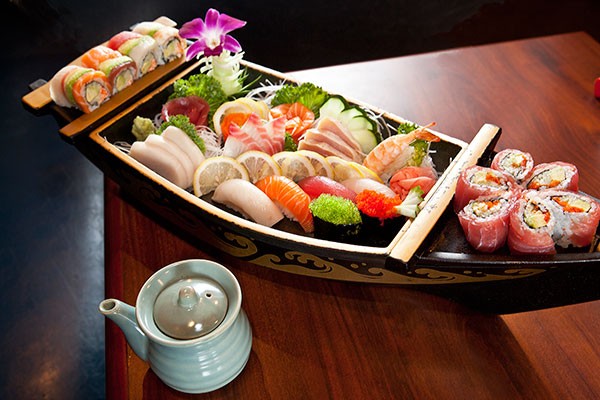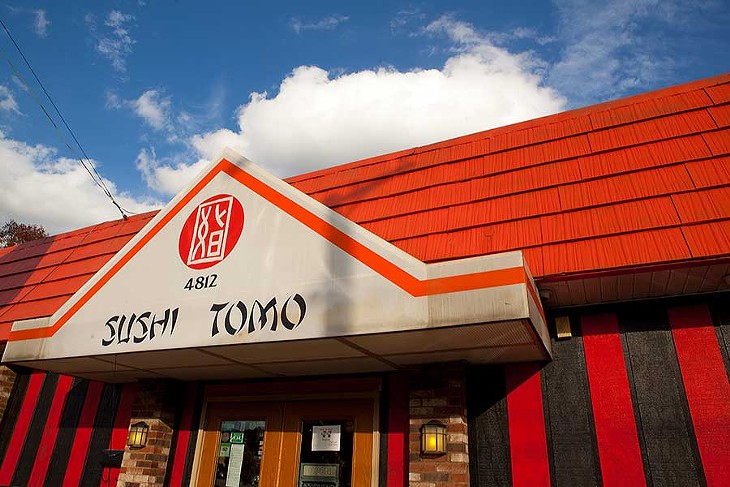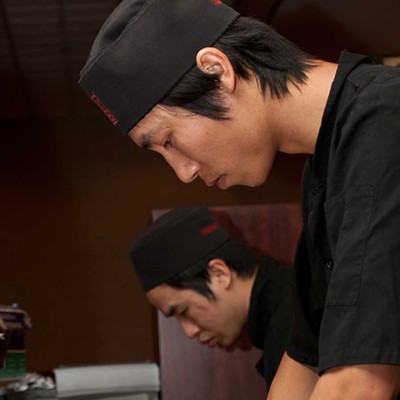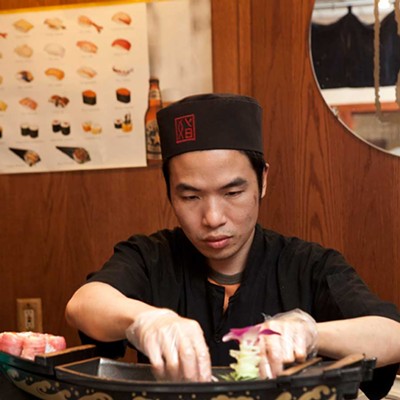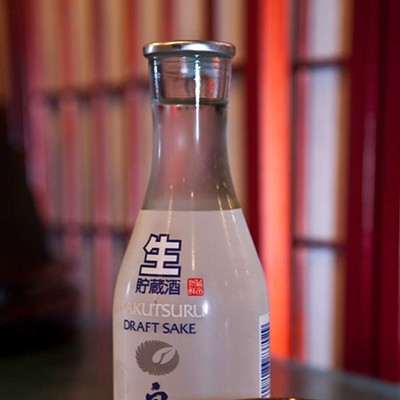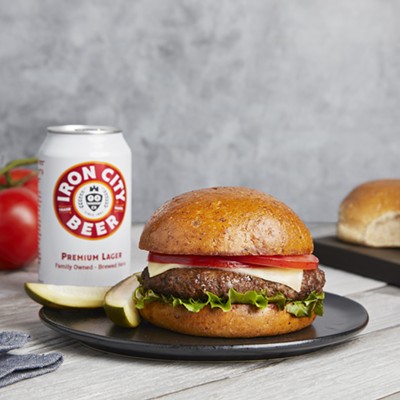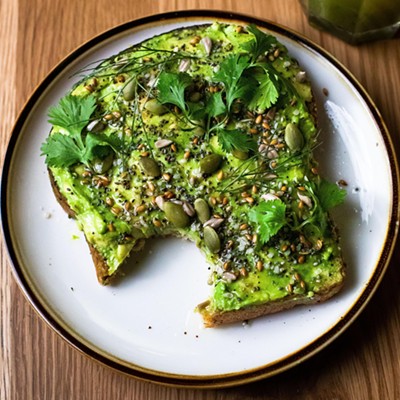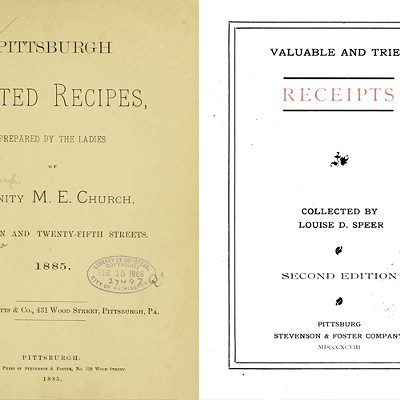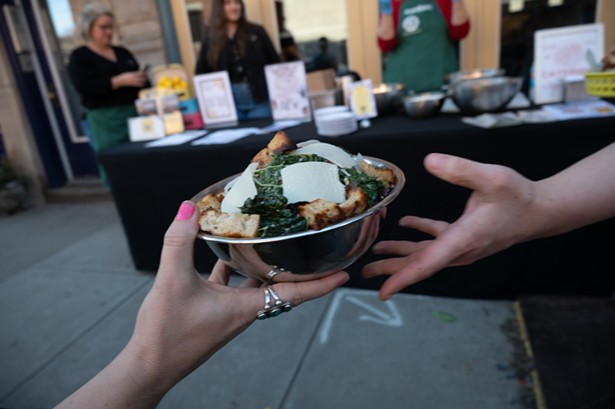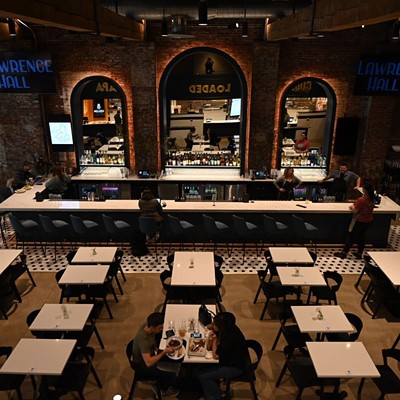Before sushi soared to fashion-food status in the 1980s, Japanese dining in America mostly meant showy chefs twirling knives above a hot griddle, teriyaki or sukiyaki. These meat-centric preparations translated well to the mid-century American diet, but despite recent interest in the everyday cooking of many cultures, the broader Japanese cuisine of noodle soups and rice bowls still gets almost no play at all.
Sushi Tomo's name doesn't suggest that it would be a place to explore the fully cooked contours of Japanese cuisine, but don't be fooled: This McKnight Road restaurant offers one of the widest selections of Japanese foods in the area. With the fall chill settling in, we were ready for some Japanese hot dishes.
Sukiyaki is actually a type of nabemono, which translates directly as "cooking pot" and refers to any of a number of one-pot hot soups. Traditionally, ingredients are arrayed on platters, and diners immerse what they like into the simmering pot of communal broth to cook at the table. At Sushi Tomo, we ordered nabeyaki udon, an iron pot full of thick, pliant udon noodles in clear broth studded with scallops, mussels, vegetables and egg.
It sounded irresistible, but the reality was a letdown. The broth was almost flavorless until seasoned with the shaker of Japanese-style chili powder served alongside; the seafood was scant and the sole vegetable seemed to be some shredded lettuce. The saving graces were the udon — rustic, almost lumpy, more like tubular dumplings than typical pasta — and the accompanying tempura shrimp skewers, heavily crusted with panko breadcrumbs, so that that a quick dip in the soup didn't diminish their crunch.
A cold noodle dish, gomoku soba, was a successful version of what we Americans tend to simply call "cold sesame noodles." The buckwheat noodles were served in a tidy nest surrounded by little piles of shredded daikon and dried seaweed, plus matchsticked cucumber, egg and pressed fish cake. Tossed all together in a well-balanced sesame sauce, the flavors and textures worked well together.
Katsudon is a type of donburi, or rice bowl, traditionally topped with fried pork cutlet, onion and a broth-like sauce flavored by salty, sweet and umami notes. Tomo's version included scrambled egg, stewed in the sauce to infuse it with flavor, as well. The dish tasted savory and satisfying, but the manner in which it was served made it almost impossible to enjoy all the ingredients together. Instead of the traditional deep, tapered rice bowl, Tomo loaded its katsudon into a bento box and heaped the toppings high above the rim; the only way down to the rice was to eat our way through the toppings first, and by then, we were stuffed.
"Eggplant dumplings" was a name both deceptive and completely apt. It looked like a platter of giant, golden gyoza, but instead of dough, the wrappers were big slices of eggplant encasing a mince of shrimp, scallop and scallion, all dipped in tempura batter and fried. It was extraordinary: The batter light and crisp, the eggplant taking on that silken texture it gets when well fried, and the filling sweet, savory and slightly astringent from the scallion. Dipped in their own thick, sweet sauce, these dumplings were simply delicious.
From the sushi bar, we tried sunomono, sashimi over matchsticks of cucumber in a vinegar sauce. Accompanying the usual salmon, tuna and crabstick was a less-common addition: saba, or mackerel. This wasn't served raw, but cured in vinegar and pressed, resulting in firm, slightly tart flesh that complemented the other, more straightforward and familiar flavors.
Most of the sushi fish was of good quality, but there was one exception: the squid was far too tough to bite through and far too chewy to masticate whole. The "scallop heaven special roll," however, lived up to its name. Specialty maki are usually tributes to excess, but Tomo has created something special with this one, pairing tempura shrimp and spicy crabstick within the roll and then topping it with scallop, avocado and ponzu. The first smart step was controlling size: despite the number of ingredients, the roll was hardly larger than some classic maki, thanks to thinly sliced toppings. As a result, the whole was well proportioned: crisp tempura against rich, creamy avocado; spicy crab against sweet, buttery scallop; and ponzu and miniature wedges of lemon adding subtle citrus tang.
Few local Japanese restaurants offer a better combination of sushi and the array of cooked foods that constitute everyday Japanese cuisine.

